JHP Newsletter - 2006, No. 6, 25 November
Tour: Kenya in Sept 2007
Join me for a 20-day photo safari to Kenya in the fall of 2007 (Sept 25 - Oct 14) where we will visit three parks and witness the wildebeest migration. The trip will begin with four days in Samburu National Reserve where we will see the unique gerenuk, reticulated giraffe, Biesa oryx, and Grevy's zebra and have good opportunities for cheetah, elephant, and leopard. Then we will spend two days at Lake Nakuru National Park where we will see flocks of thousands of lesser flamingos and also Rothschild's giraffe and white rhino. Then we will spend 12 days in Masai Mara National Reserve to witness the wildebeest migration and see Masai giraffe, black rhino, and common zebra, along with cheetah, elephant, leopard, and lion. We will spend those 12 days in the Mara in three different areas of the large park to minimize travel time and increase shooting time, and there will only be three photographers per 7-passenger Land Rover to facilitate shooting and carry our gear.
Travel: South Africa
South Africa was awesome yet again!!
It's always a shock going to South Africa after being in East Africa because the game is sparser and the shooting opportunities are fewer. However, the opportunities are usually different than what is available in East Africa, and as usual I got some great images on this trip!
I spent about four weeks in South Africa, and hit the same game parks as my previous trip but skipped all of the purely landscape destinations. I started with two days in Pilanesberg National Park, and while I was able to capture some good images, none were spectacular enough to include here. But that's the nature of wildlife shooting — you never know what you'll find.
Then I spent six days in Kruger National Park, and one of the most exciting shots of the whole trip was of a dung beetle rolling a ball of dung down the road (below left). OK, so dung beetles probably aren't at the top anyone's list favorite animals, but everything came together for this shot: great action, nice light, great position, and a perfect foreground and background to make the subject jump out. Not only was the image exciting, but shooting was exciting too. You're only allowed to get out of your vehicle in rest camps and some designated lookout areas, so when I absolutely did not get out of my car in a forbidden area to shoot from ground level with my lens on beanbag, I was presenting myself as a potential snack for a leopard or lion.
Another special image is of a malachite kingfisher taking off (below right). Malachite kingfishers are uncommon, small, and generally flighty, so the opportunity to shoot a cooperative subject is a real treat. This guy was hanging out by a causeway over the Olifants River, and was on a perch close enough to shoot. I watched him hunt for a while as he would dive down and then return to his favorite perch. After one foray, he returned to an even closer perch and I was able to get some very nice portrait shots before capturing this image as he flew away.
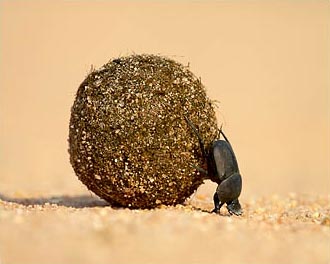
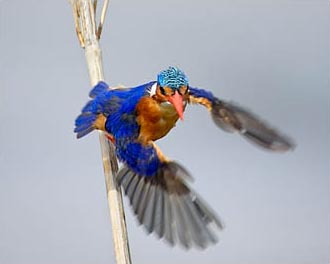
On this trip, I spent a lot of time at the causeway across the Biyamiti River. It's immediately downstream of a low dam, and the water level behind the dam is less than a foot below a car's windowsill. That creates an opportunity to get unique, extremely low-angle images of whatever happens to be around. The most interesting shot I got was of a hippo (below left) that had gotten out of the water, went grazing in some high grass, then paused by the edge of the water before getting back in. It's not every day that you get to see a hippo out of the water, and it's especially uncommon to be looking up at one!
This trip was also good for cats. Large predators are much harder to see in South Africa than in East Africa because of the thicker vegetation. On this trip I saw (and shot) three lioness near Pretoriouskop near where I had seen some last year, and I saw a leopard walking away from a waterhole. On the last morning in Kruger, I came upon a car that was stopped on the road — a good indication that something interesting was nearby. They excitedly told me about a leopard that had chased an impala across the road and they were trying to find the leopard again. I looked and didn't see anything in the fairly thick growth, and then a third car came and spotted the leopard. The leopard was barely visible from where the third car had stopped, so I waited. It finished grooming, or otherwise hiding, and then passed through an open area where I could shoot it before it disappeared into the thick brush headed away from the road. Not a bad way to end my stay in Kruger!
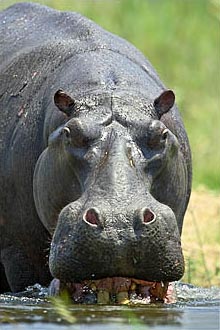
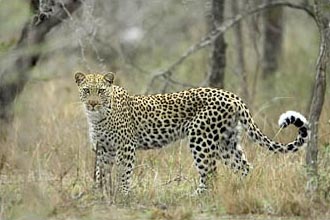
On this trip, I spent a lot of time at the causeway across the Biyamiti River. It's immediately downstream of a low dam, and the water level behind the dam is less than a foot below a car's windowsill. That creates an opportunity to get unique, extremely low-angle images of whatever happens to be around. The most interesting shot I got was of a hippo (below left) that had gotten out of the water, went grazing in some high grass, then paused by the edge of the water before getting back in. It's not every day that you get to see a hippo out of the water, and it's especially uncommon to be looking up at one!
The three days in Hluhluwe/Imfolozi Game Reserve were not as productive photographically as previous visits, but I was able to see some firsts. I saw and photographed a new species of bird — new to me that is. The southern bald ibis (below left) is in fact bald, and has something like a red cap. I also saw, but wasn't able to photograph, some very interesting white rhino behavior. A youngster was play-fighting with some young adults, and it was very amusing to see him bounce left and right as he was taunting the older rhinos. Yes, bouncing just like a puppy playing. It was quite amazing to see such a large, and usually slow-moving animal, move around so nimbly.
The two days in Addo Elephant National Park let me see some firsts and capture them too. I was able to watch two adult crowned plovers teach their two chick how to hunt. After the adult found some suitable prey (like a caterpillar, or some other slow-moving animal) it would call for the chicks and then point at the prey . The chick would usually come over, look at the nice grass (below right), and after the adult kept looking at the item of interest, the chick would finally get the idea that there was something to eat. I was also able to get a dung-beetle's-eye-view shot of a leopard tortoise crossing the road. This was another exciting shot to take because I did not get out of my vehicle and violate a park rule. :)
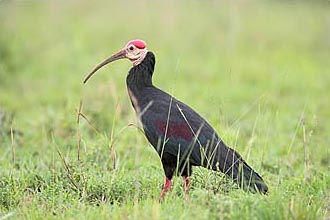
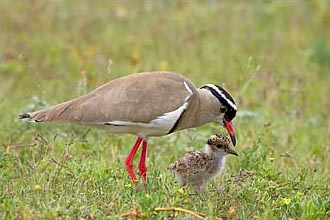
I spent two days at Mountain Zebra National Park, and while I got some good shots of the mountain zebras, and other large mammals, the most exciting image was of a male southern rock agama (below right). He was a very cooperative subject, and I was able to follow him from rock to rock right along the road as he would try different poses until he finally got tired of the paparazzi and headed off for some privacy.
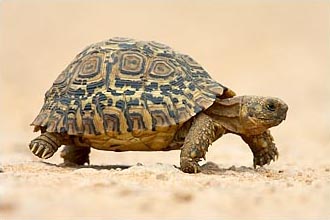
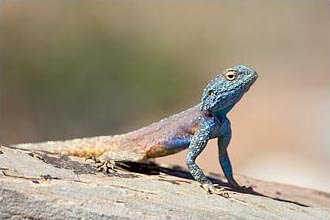
I spent a day at Karoo National Park. There was solid overcast over the park first thing in the morning, so I headed to the part of the park closest to where the clouds were broken in the distance so I'd have more light, even though that area hasn't been photographically productive before — the Klipspringer Pass area. Klipspringers are a small antelope that live in rocky, mountainous areas, and while I had seen a few on my previous trips, I wasn't able to shoot any until earlier on this trip in Kruger. Near the top of the pass, I came across a male and female klipspringer right by the road, and they were very tolerant (below left).
Then I spent four days in Kgalagadi Transfrontier Park, encompassing the former Kalahari Gemsbok National Park, and it was definitely the best part of the trip! It was great for cats! I saw my first good cheetah in South Africa, but it wasn't shootable. I also came across a very nice African wild cat (below right). They are about the size of a domestic cat, and I've seen them in the park on my previous trips, but none were in such a great position to get such good shots.
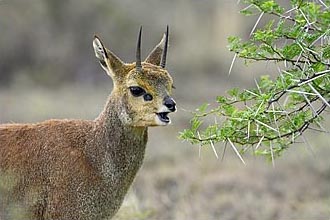
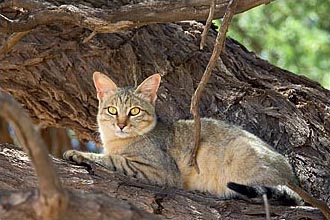
I saw lions two times. The first was a male and female mating, and the image (below left) captures the, ah, climax of the action. When lions mate, they copulate for a few minutes, sleep for about an hour, then copulate again. They do this, and not much else, for about a day.
Bee-eaters are small colorful birds that capture their prey (insects, and generally not bees) on the wing. They usually hang out on a favorite perch and wait for the food to come into range. Then they fly out, snatch the insect out of the air, and return to the perch to devour the morsel after knocking off any large wings that might make swallowing difficult. For the first time, I saw them taking food to their nest (below right) in small holes in the ground. I was able to capture some nice shots of them flying and exposing their colorful wing plumage.
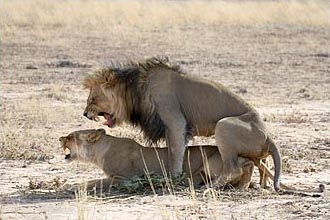
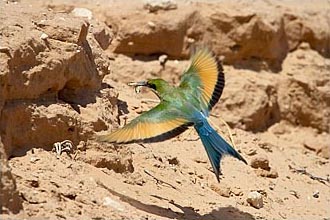
One of the most unusual experiences I had occurred on my last day in the park. I came across a martial eagle on the ground. Martial eagles are the largest eagle in Africa, and the one's I've encountered in East Africa have been shy. This martial eagle (below left) was extremely tolerant! I approached in stages, and eventually ended up shooting it from about 15 ft (4.5 m) away!!!
Another unusual experience was finding two snakes in what looked like mortal combat (below right). A mole snake, the black constrictor, was wrapped around a cape cobra, and the cobra had its fangs in the mole snake's "neck." When I arrived, they were hardly moving, and it looked like the mole snake was finishing off the cape cobra. After a while, the cobra started moving, maybe because its venom was taking effect. Then all of a sudden, the cobra escaped from the mole snake's grasp, and it looked like it was chasing the mole snake away — they were moving in the same direction about a foot (30 cm) apart with the mole snake about a foot (30 cm) ahead. When the mole snake had moved far enough, the cobra broke off pursuit and they went their separate ways.
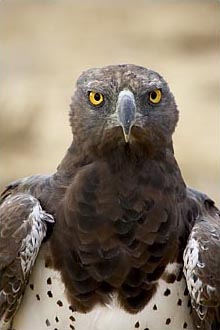
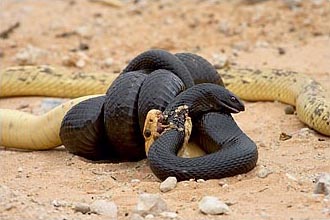
Take care, and happy shooting.
— James
James Hager Photography :: www.jameshagerphoto.com




